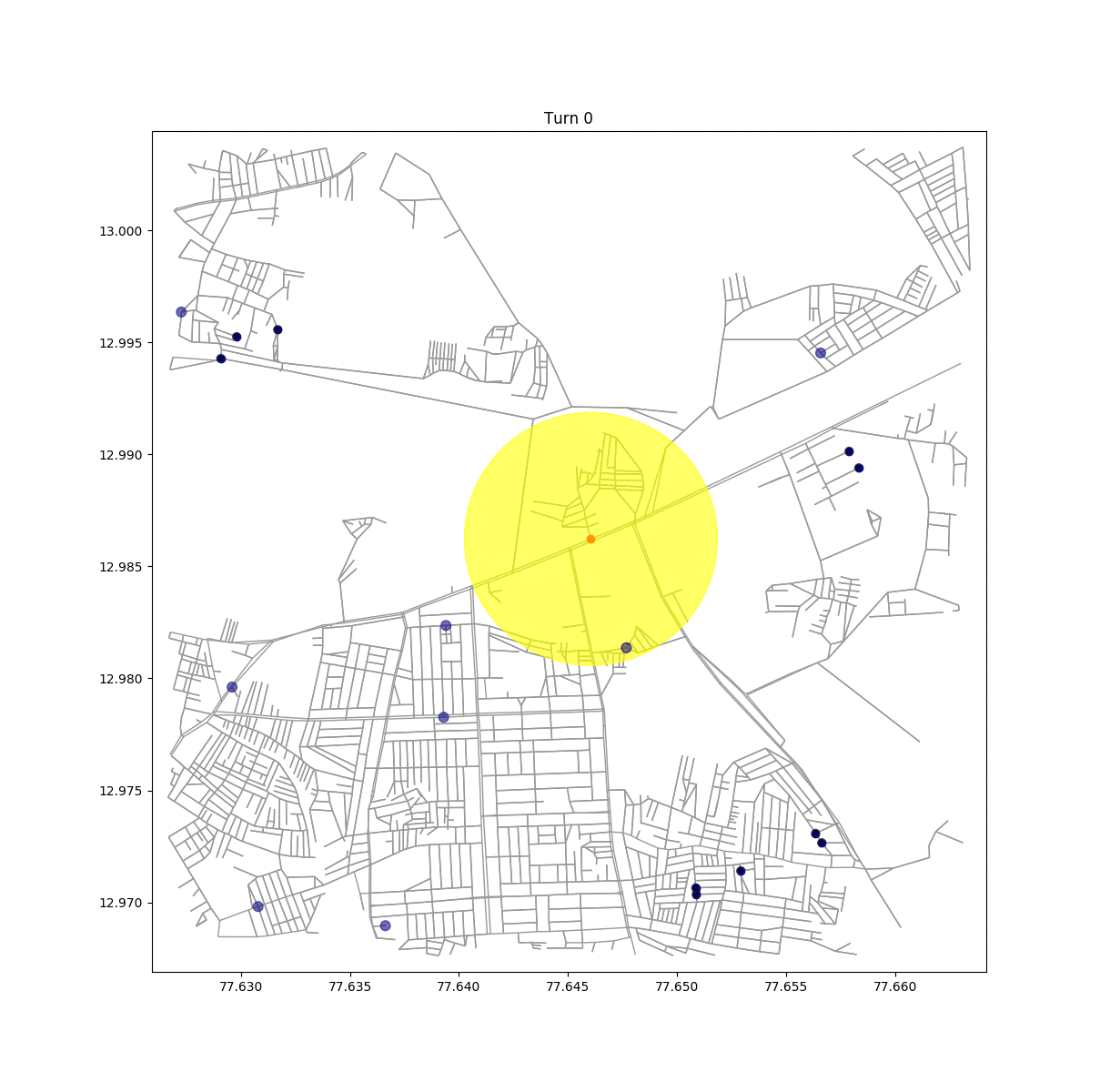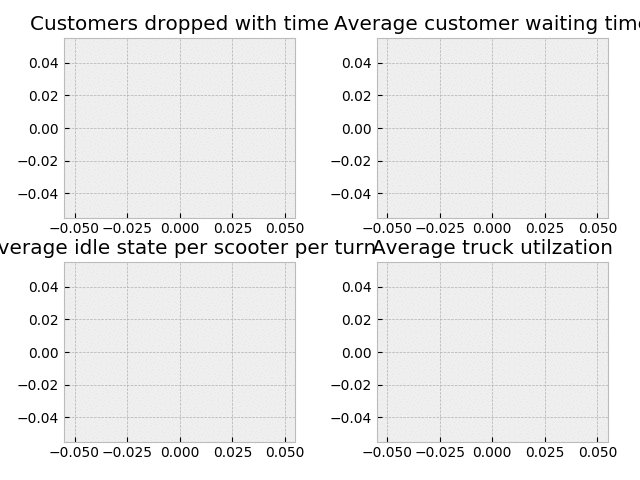This is my experiment for Bounce Hackathon 1.0. My idea is to solve supply demand issues in ride-sharing and micro-mobility space by dynamically redistributing the vehicle, in this scooters using large vehicles like trucks. I wrote this module to simulate a probabilistic model for customers, scooters and trucks. I wanted to make it look pretty, so I added visualization for the road networks and animation for the moving points. You can go through the pitch deck to better understand the motivation.
It looked up a lot of libraries and SO answers, only a subset of which I used. So I have added a few important links in the Reference section
The unit for time for the simulation is a turn. Each turn also updates a frame in the animation. For sake of simplicity (mainly lack of time), I have considered the distance between each node in the road network, to be equal. Although the road networks is sampled from a real place, it is essentially a square grid for this simulation.
scooter_simulation.SimulateScooters
Scooters can hailed from a metro station. There is a fixed influx of customers (IN_RATE), who are equally probable (OFFICE_PROB) to go to any one of the offices. Each customer will wait for a fixed number of turns (WAITING_TIME). Total number of scooters in the map is fixed (SCOOTERS_TOTAL). Scooters parked at offices have a probability (REPLENISH), intentionally kept small, of returning to the metro station to simulate a small amount of traffic coming back from the offices. The turn method updates the scooter positions in each turn.
Scooters are shown as fixed size (SIZE) moving points when they are used. Large circles around offices and metro, indicate accumulation of unused scooters.
truck_simulation.SimulateTrucks
The number of trucks (NUMBER), and carrying capacity (CAPACITY) can be changed. The brute brute_algo starts giving significant delays with 4 or more trucks. I have written two simple scoring functions. The greedy_score tries to maximize profit, while the aging_score prevents starvation by increasing priority of unused scooters. A third scoring function combined_score tries to combine the two scores in a given ratio.
Empty trucks have a fixed size (SIZE) and the size grows proportionally with the number of scooters it is carrying.
bounce_simulation.BounceSimulation
setup_plot sets the stage for the simulation. It adds 3 artists to the figure, lc which draws the roads, plot_scooters which draws scooter positions and plot_trucks which draws trucks. update_plot is called for every frame. It firsts calls updates scooter state for the turn. It then updates the artist for the scooters with new positions, sized and colors. Next it calculates the path for idle trucks and updates state for all trucks, after which updates the artist plotting the trucks.
update_plot also collects data logged by SimulateTrucks and SimulateScooters. It stores the logs as a list of lists. The list is flattened before passing it to VisualizeData.
visualize_data.VisualizeData
Similar to BounceSimulation, has setup_plot and animate. animate clears the the figure, appends an additional data point and re-renders the figure, a crude but effective method.
Some libraries might fail to import at first, the error message will mention a missing binary, which you'll have to install to make it work.
Normally, 100 dpi resolution shoule be enough. I tried rendering a 440 dpi gif, which crashed my system. The program is also a memory hog, and rendering more than 150 frames can consume more than 5GB of memory.

